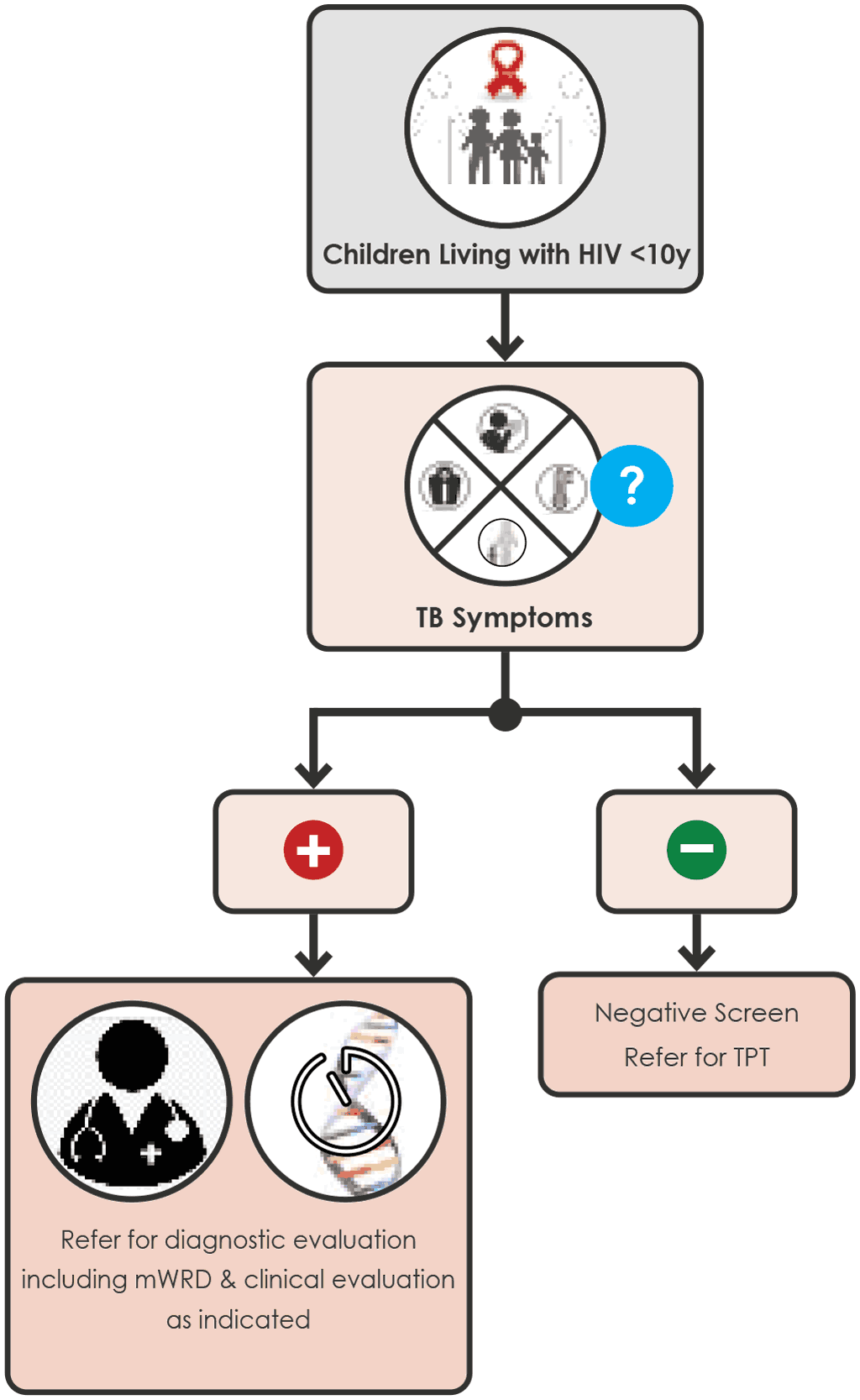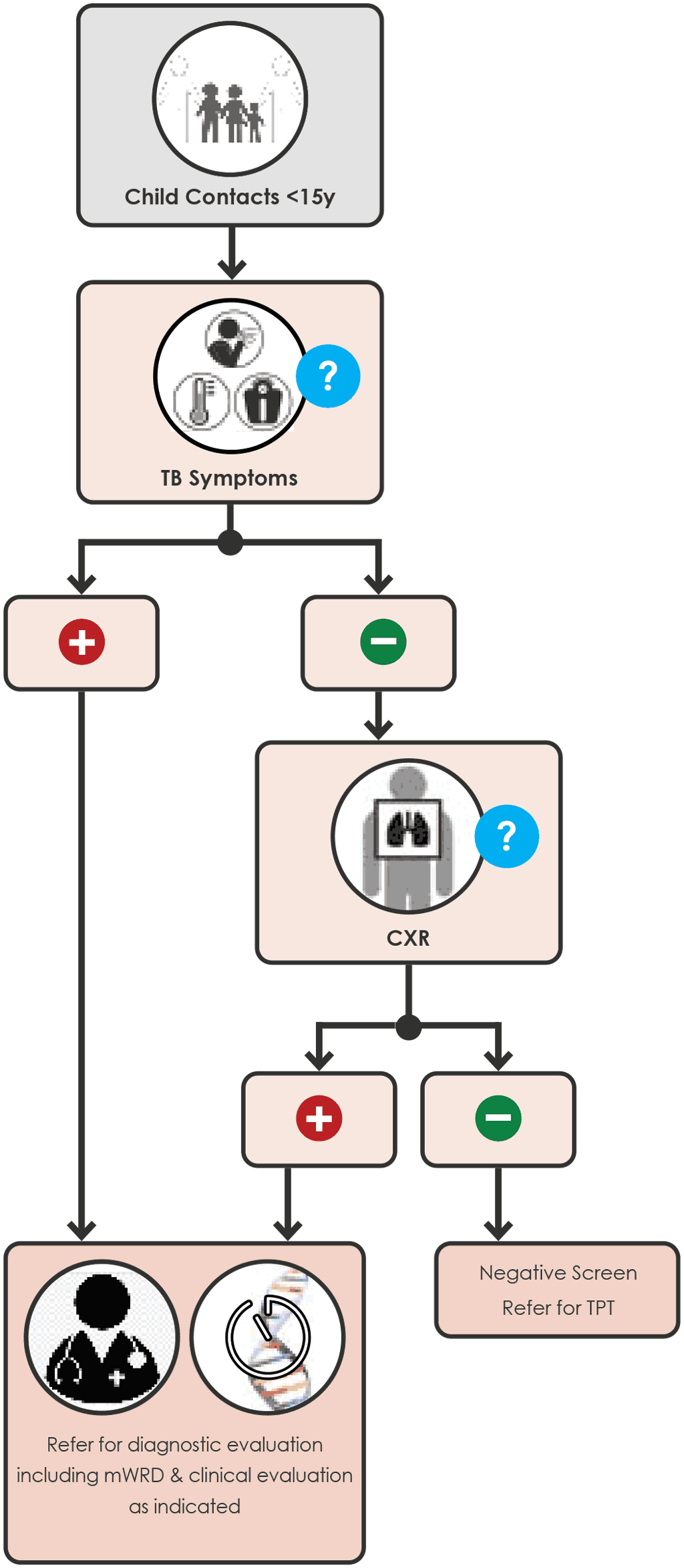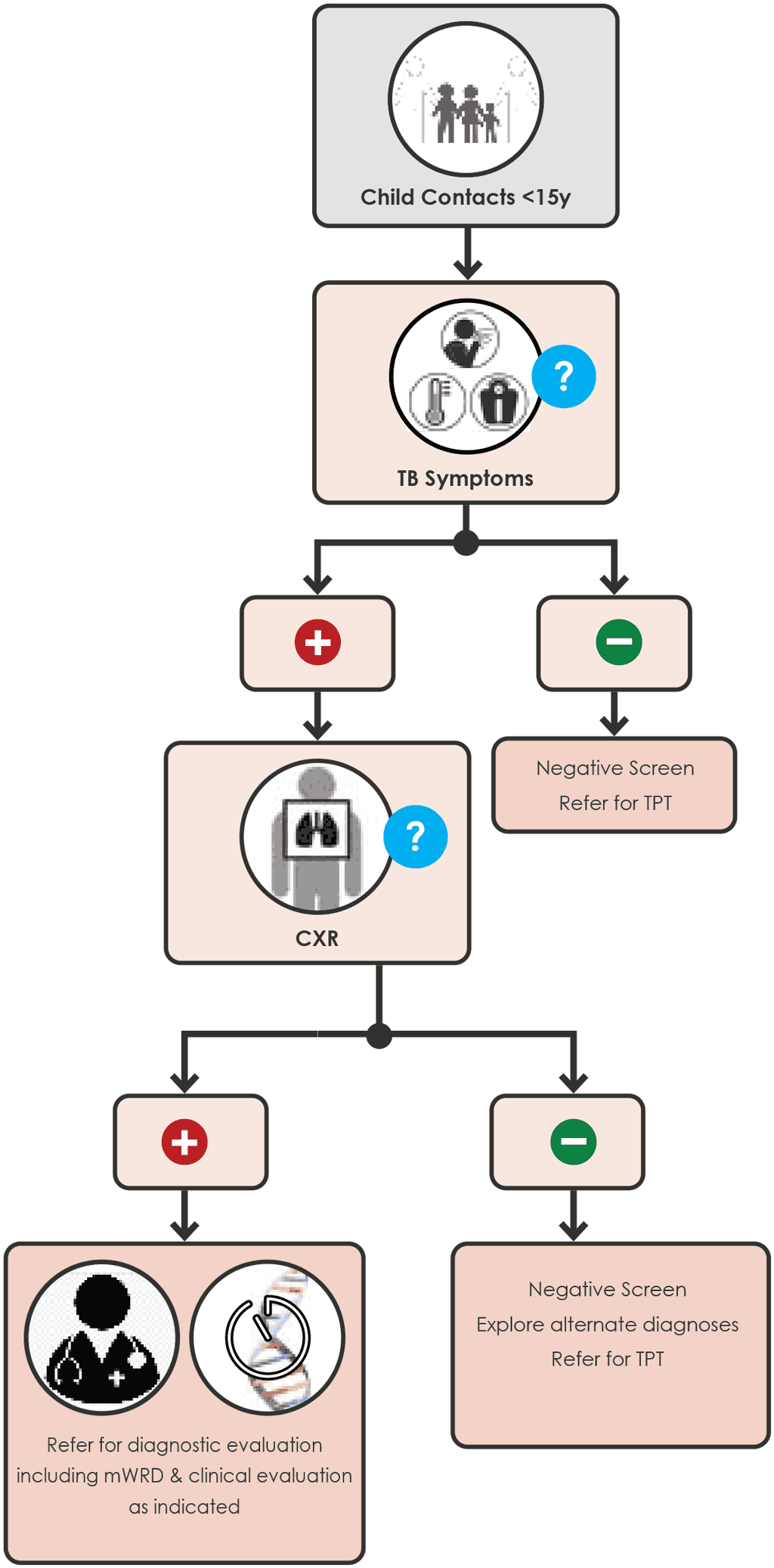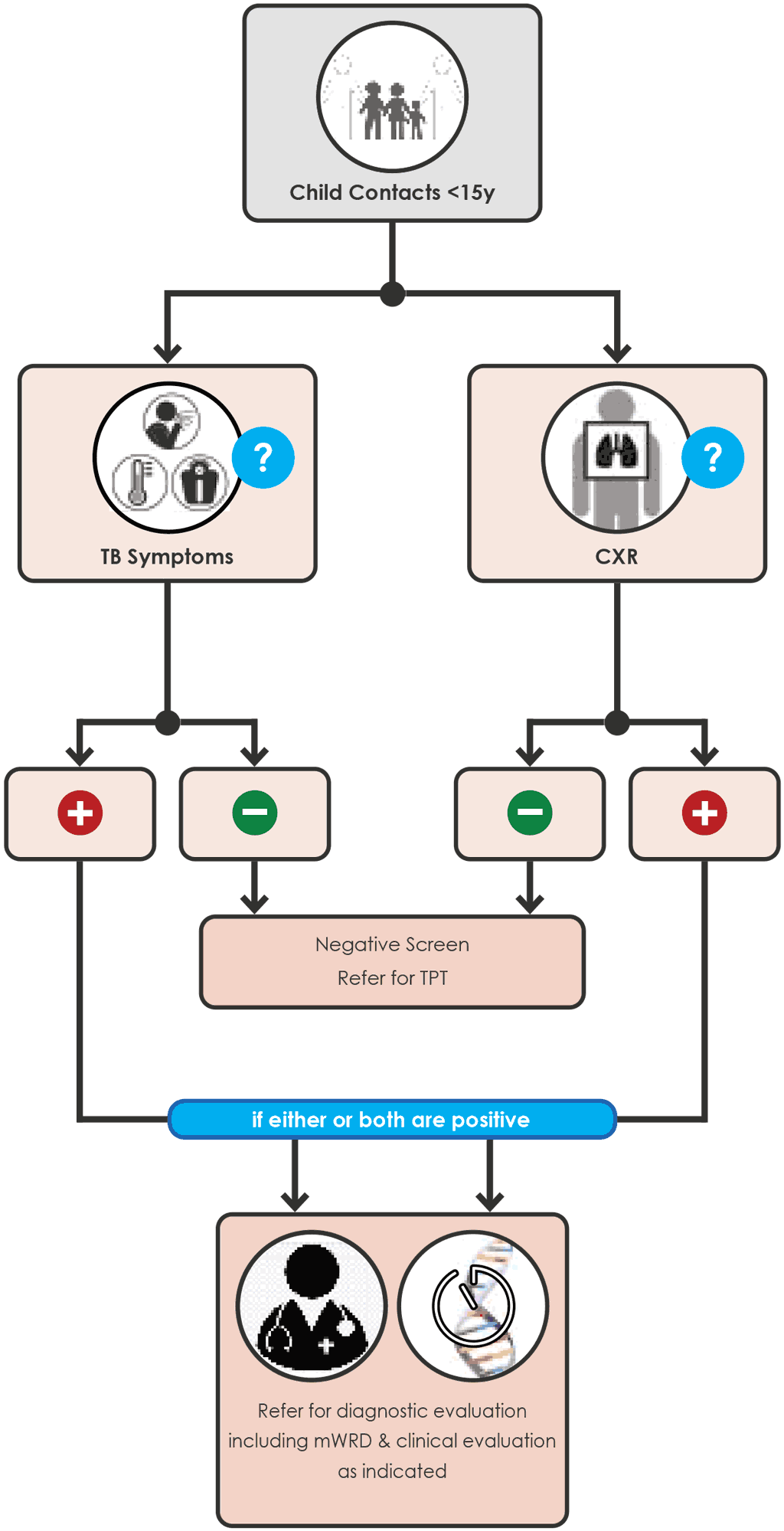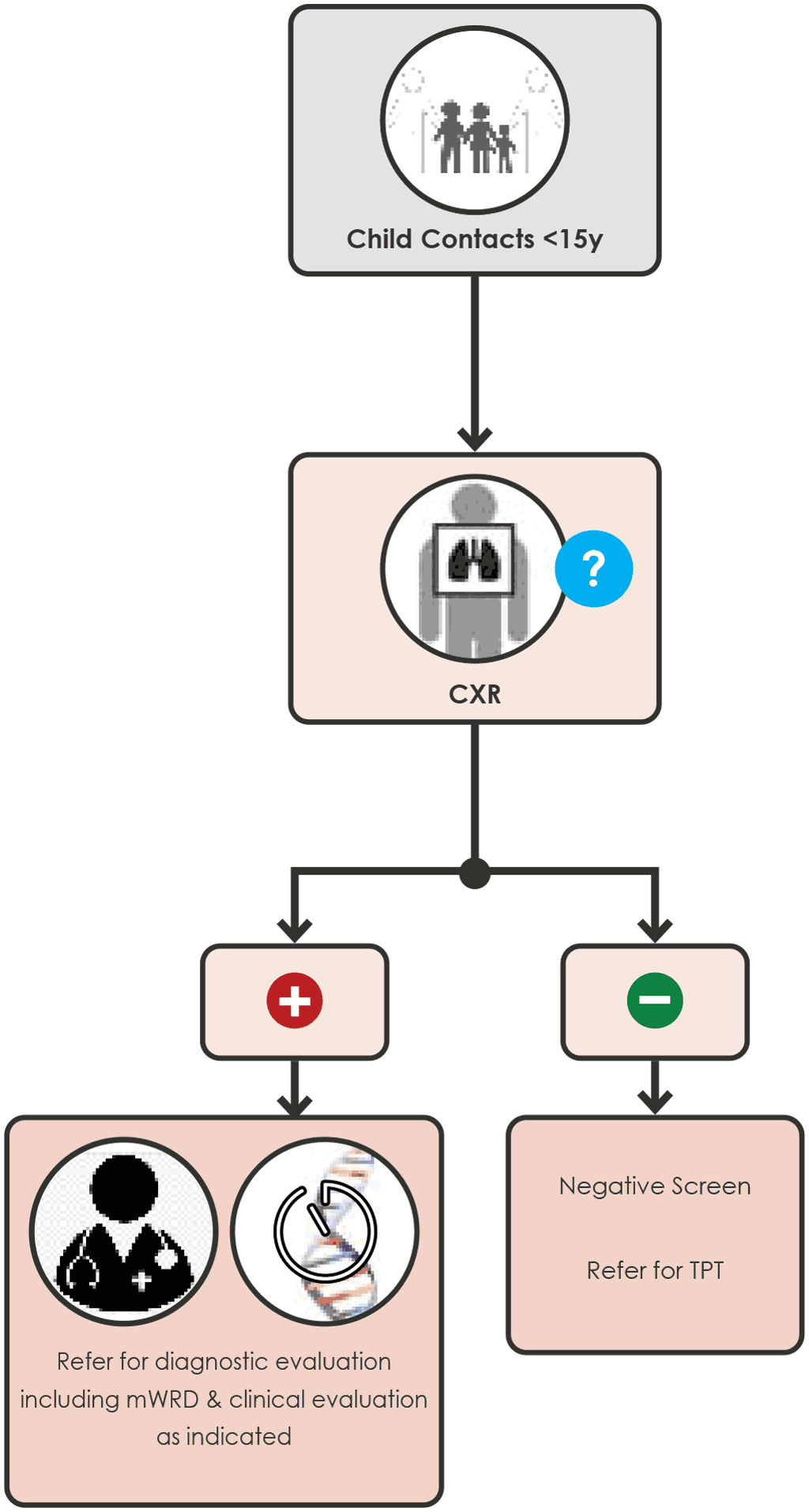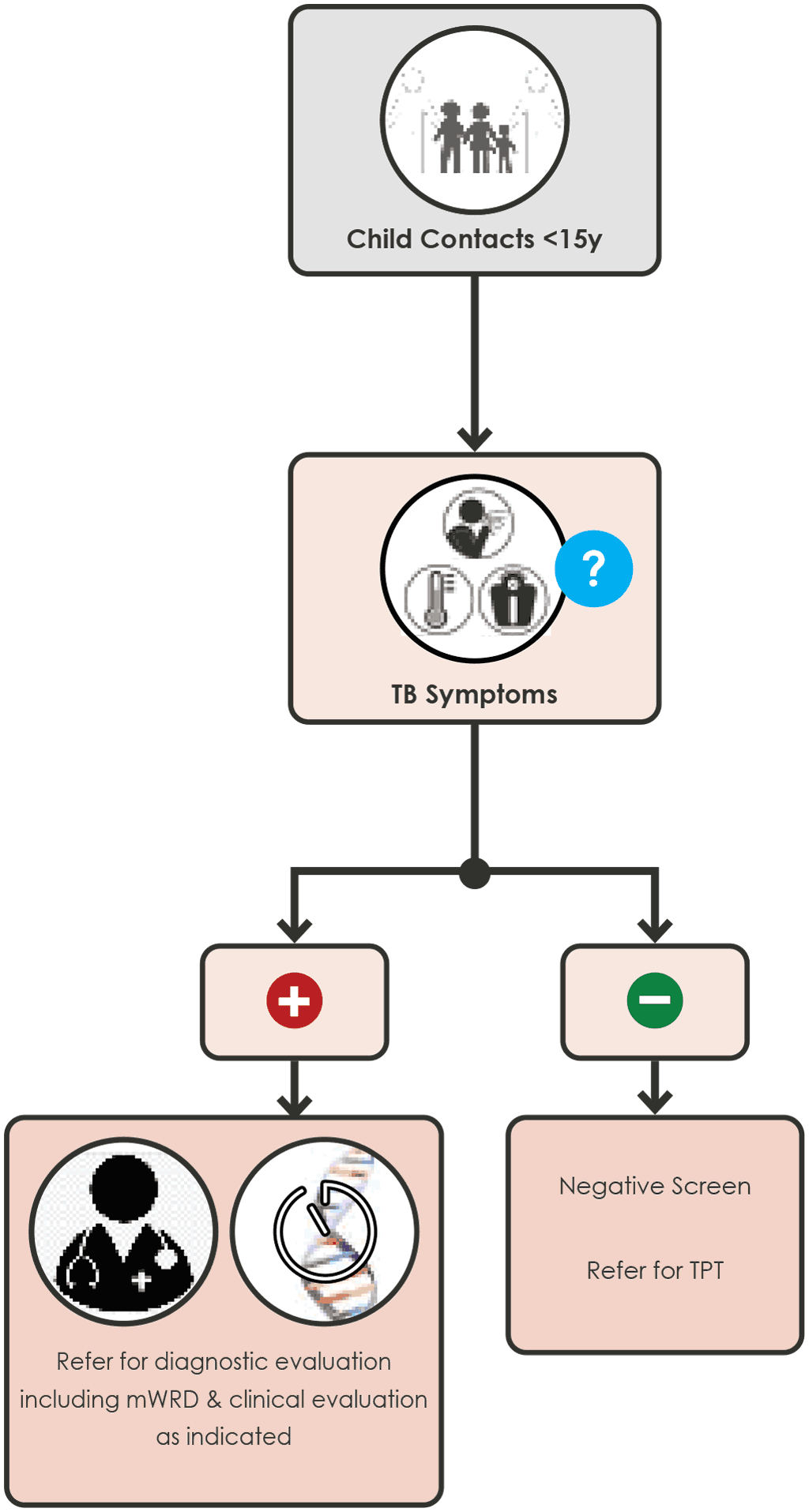Operational Handbooks
A.3.11 – mWRD single screening algorithm for people living with HIV
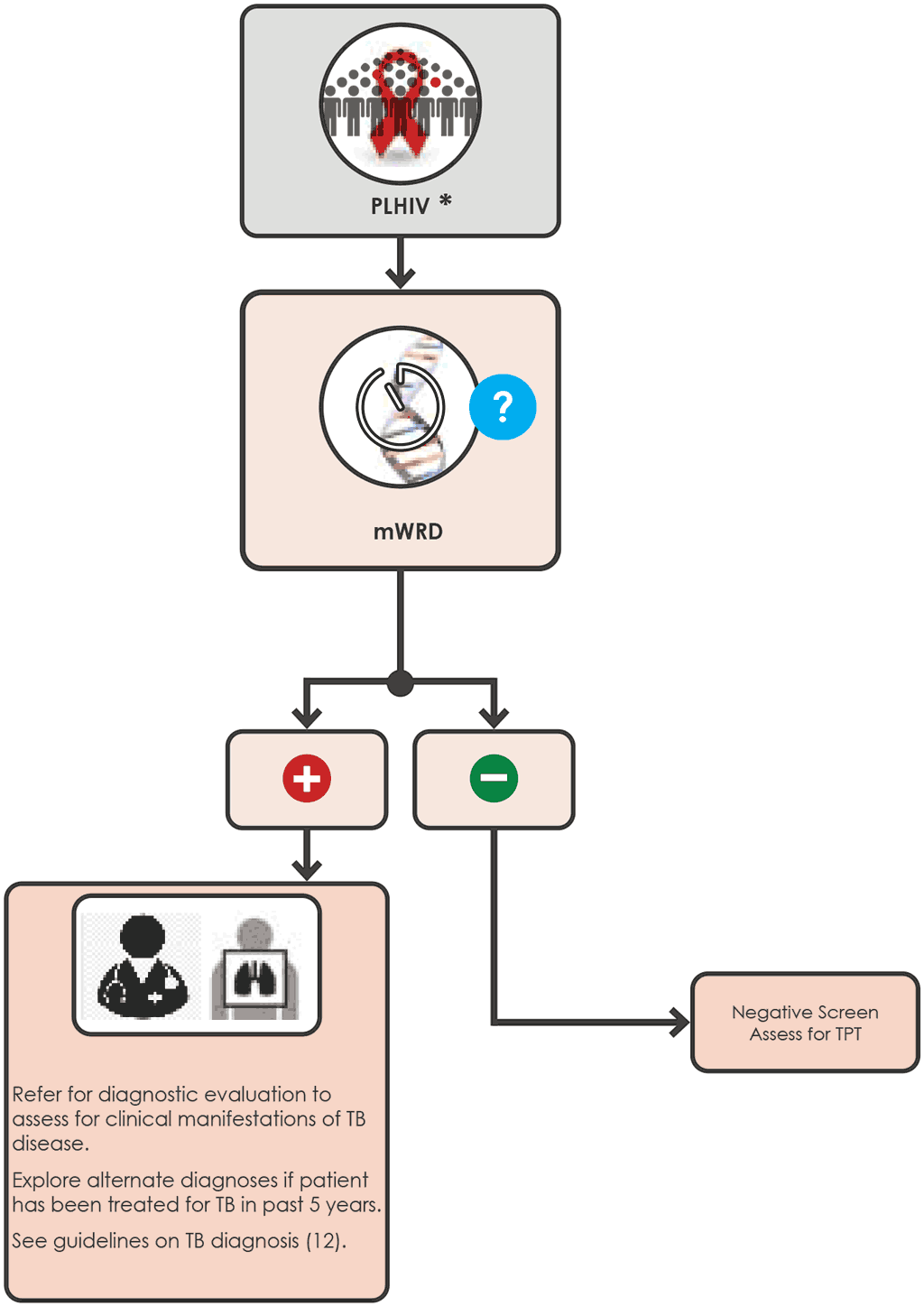
* In this population, diagnostic testing for TB with LF-LAM and other methods is usually considered early on. See WHO consolidated guidelines on tuberculosis, Module 3: Diagnosis – Rapid diagnostics for tuberculosis detection (12)
A.3.10 – mWRD single screening algorithm for medical inpatients in settings with TB prevalence > 10%
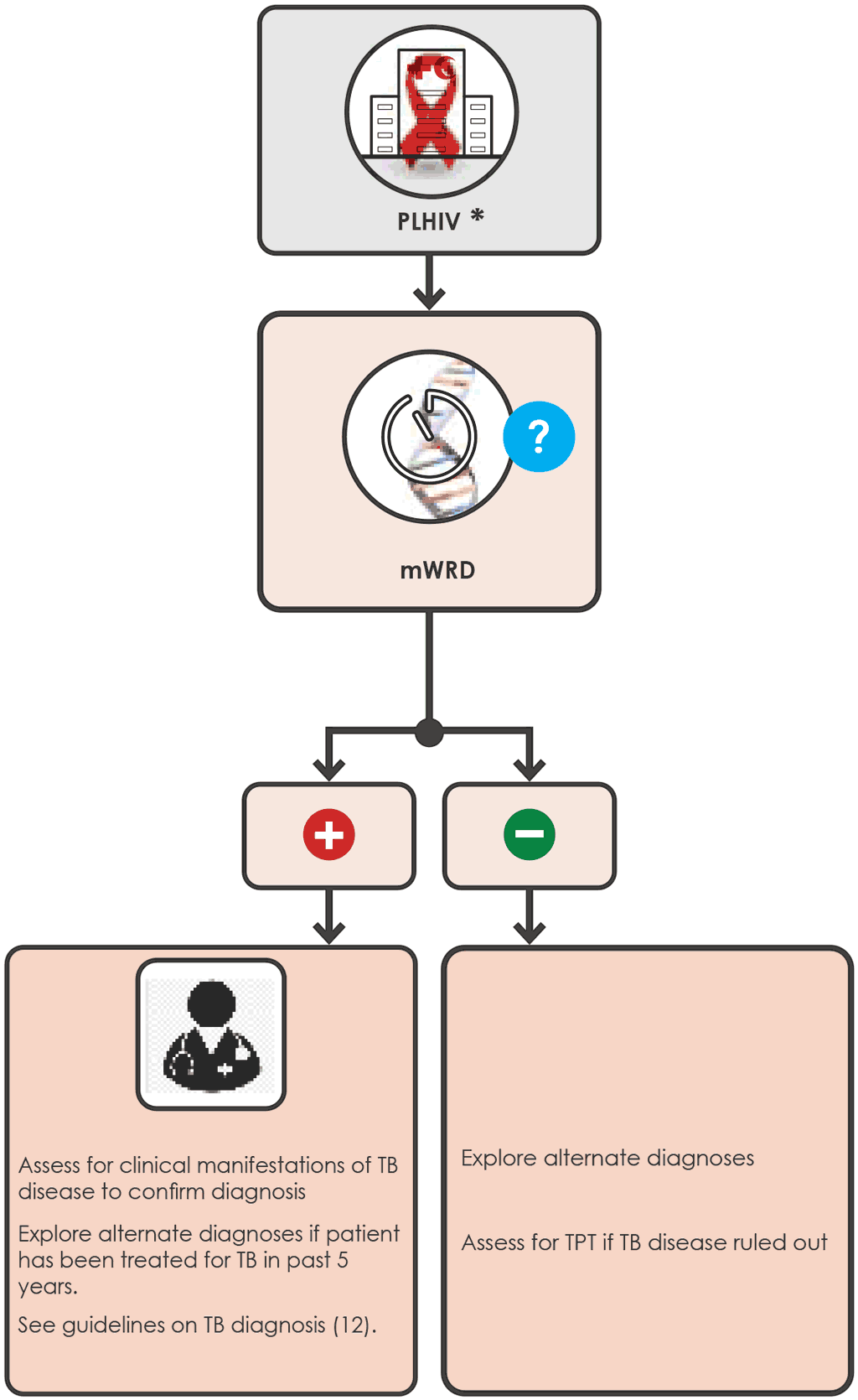
* In this population, diagnostic testing for TB with LF-LAM and other methods is usually considered early on. See WHO consolidated guidelines on tuberculosis, Module 3: Diagnosis – Rapid diagnostics for tuberculosis detection (12)
A.3.9 – Sequential negative screening algorithm with W4SS and CXR
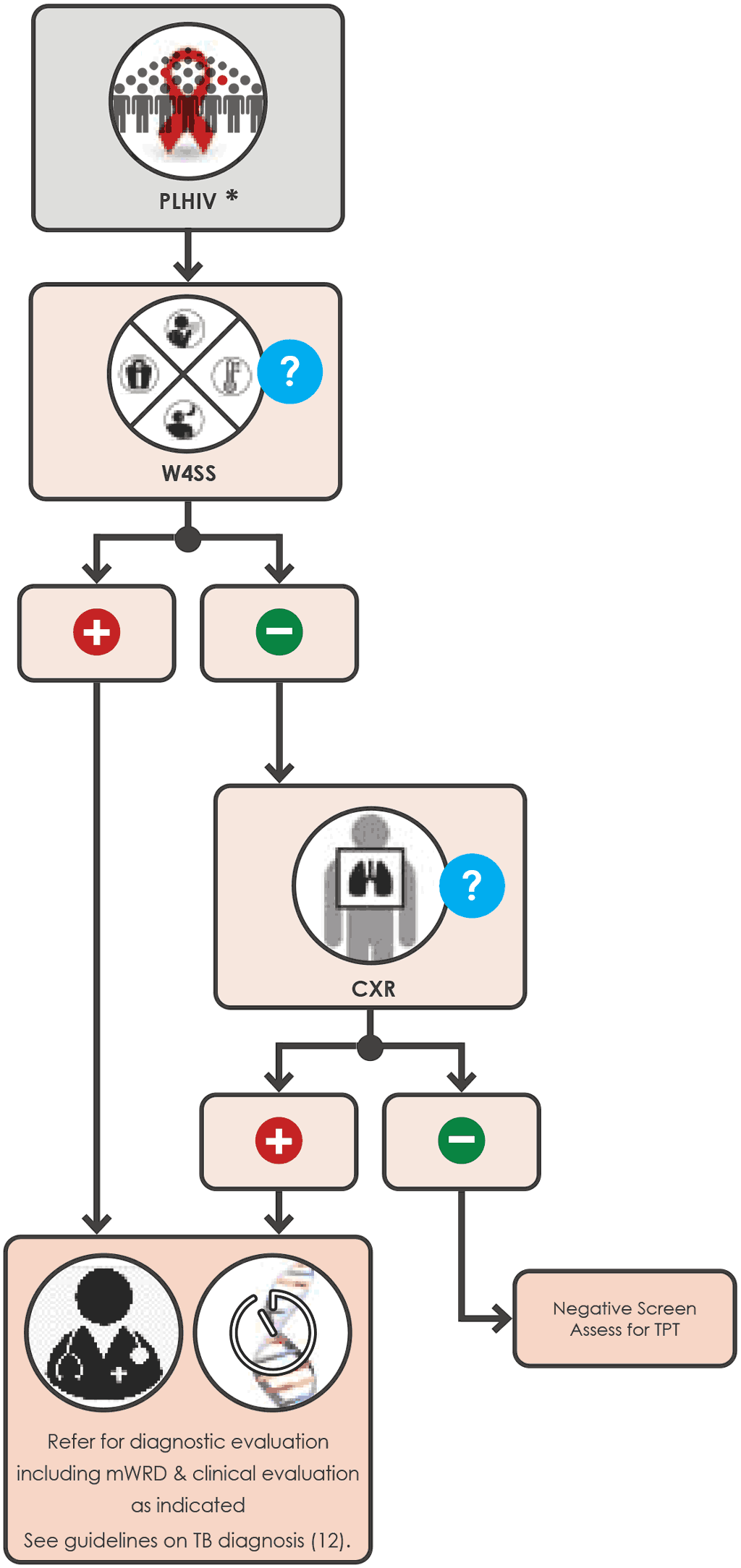
* In this population, diagnostic testing for TB with LF-LAM and other methods is usually considered early on. See WHO consolidated guidelines on tuberculosis, Module 3: Diagnosis – Rapid diagnostics for tuberculosis detection (12)
A.3.8 – Sequential positive screening algorithm with W4SS and CXR
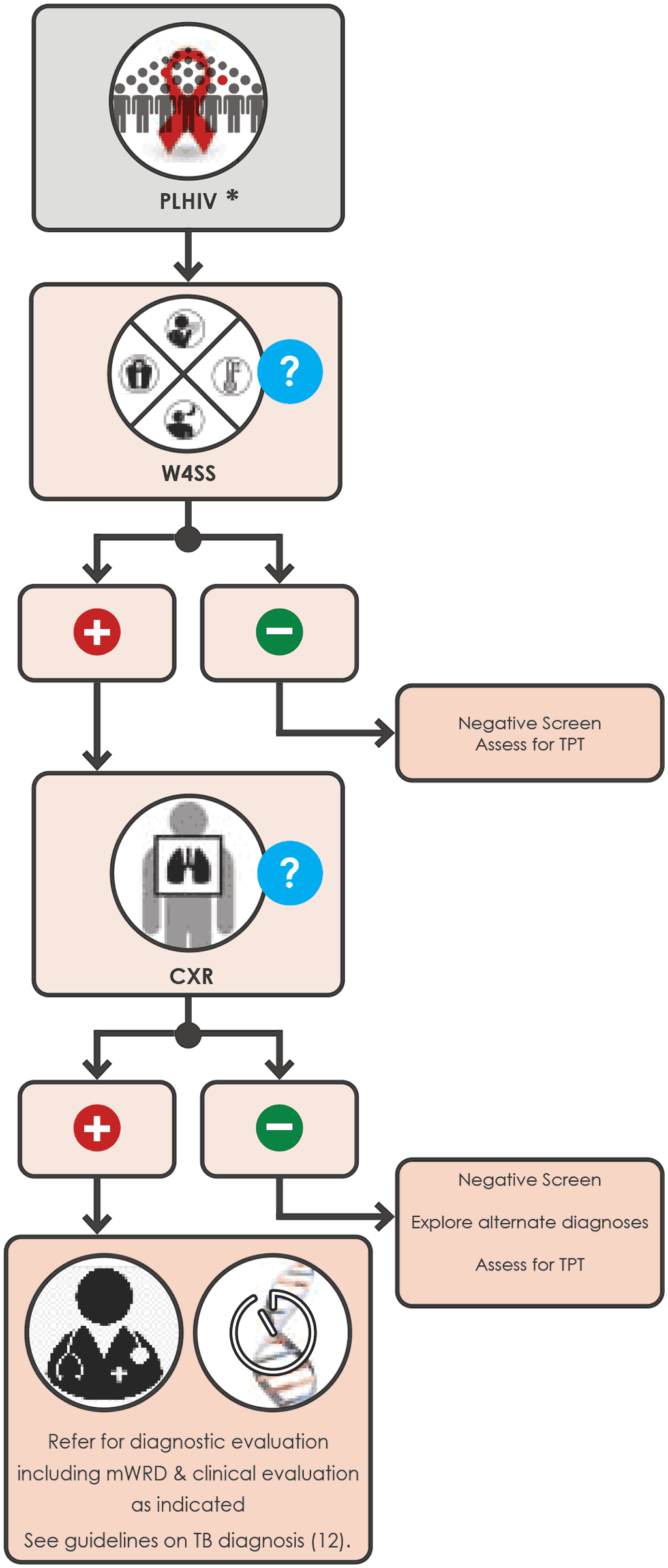
* In this population, diagnostic testing for TB with LF-LAM and other methods is usually considered early on. See WHO consolidated guidelines on tuberculosis, Module 3: Diagnosis – Rapid diagnostics for tuberculosis detection (12)
Pagination
- Previous page
- Page 18
- Next page

 Feedback
Feedback